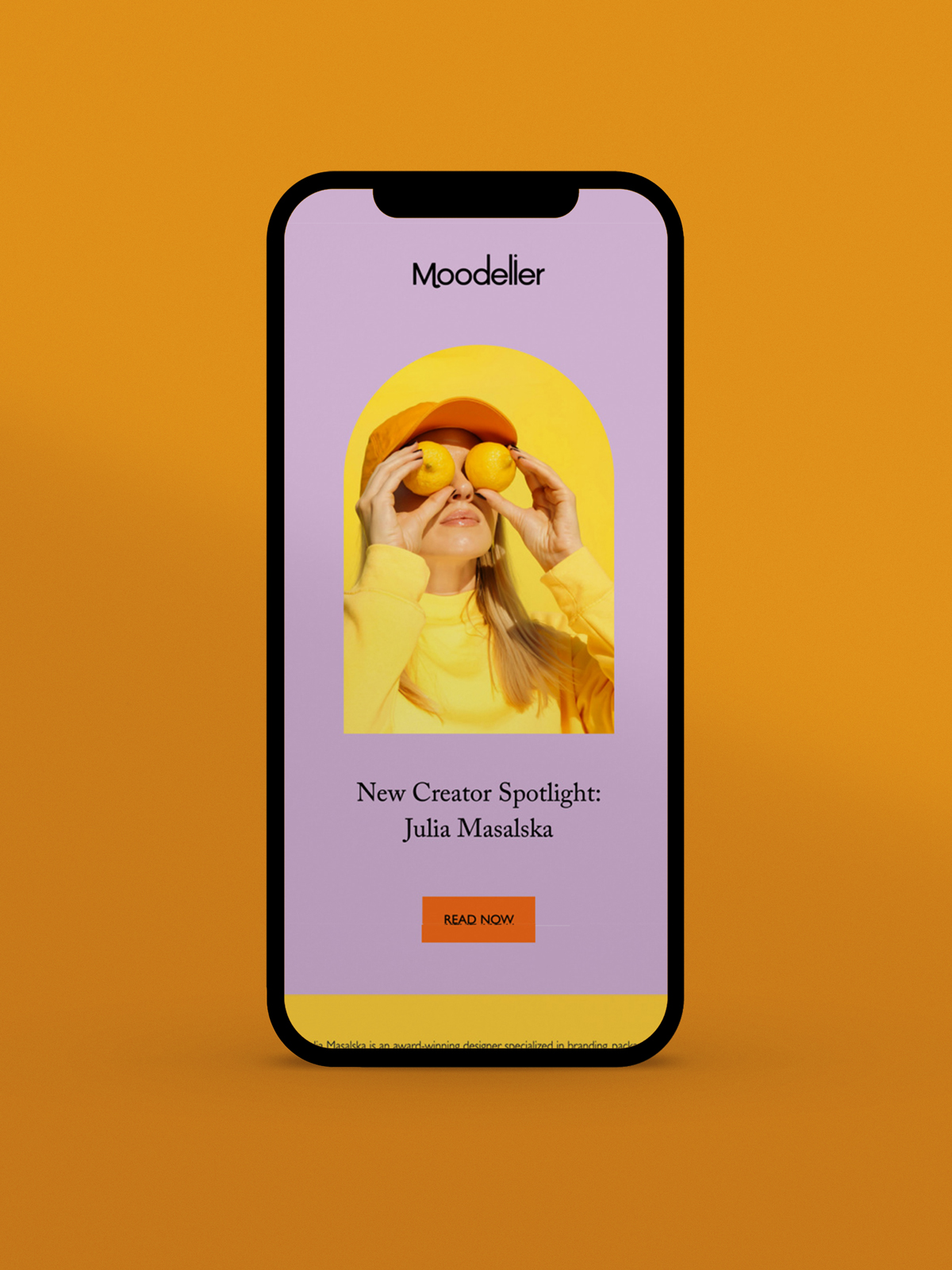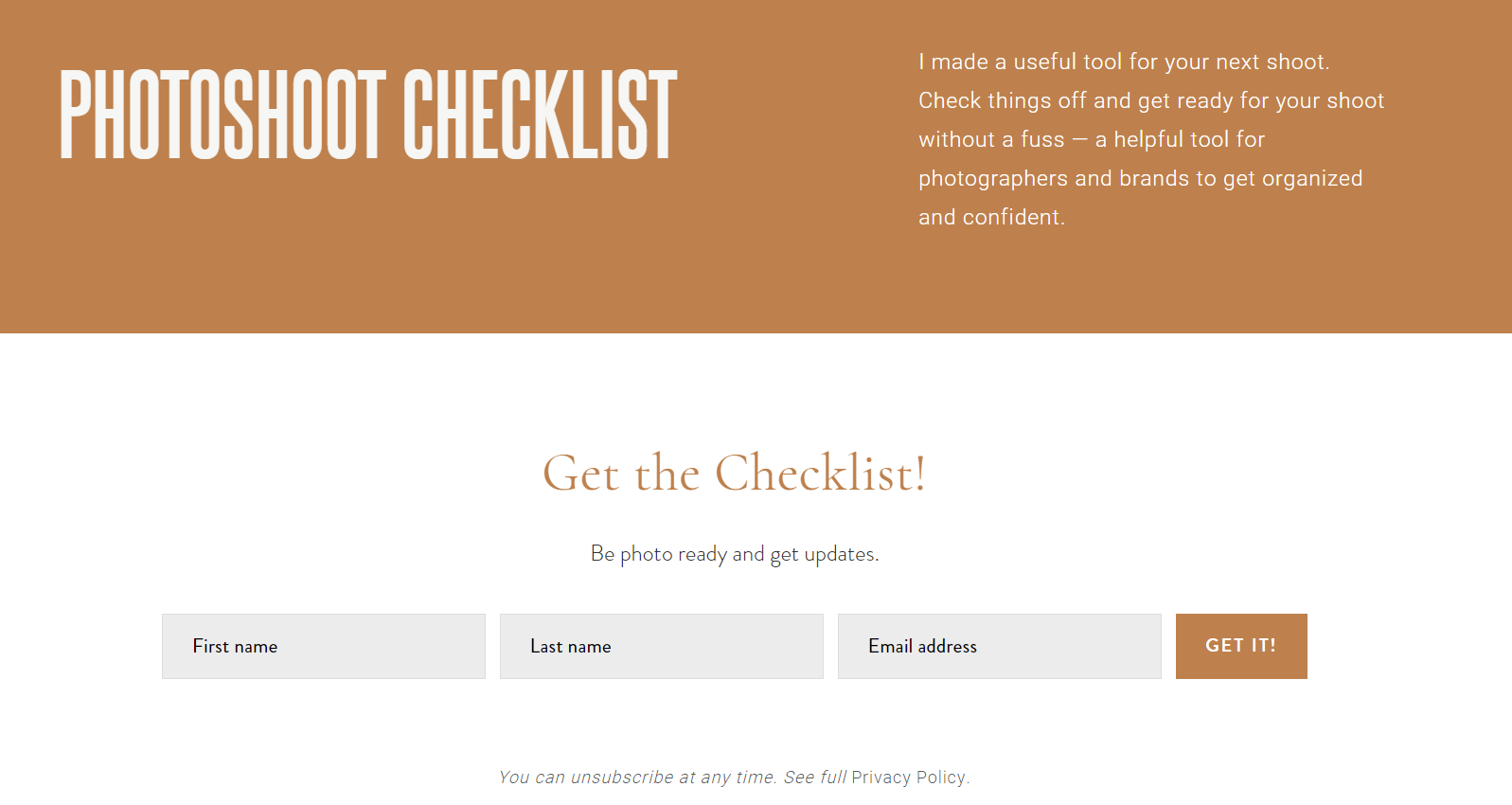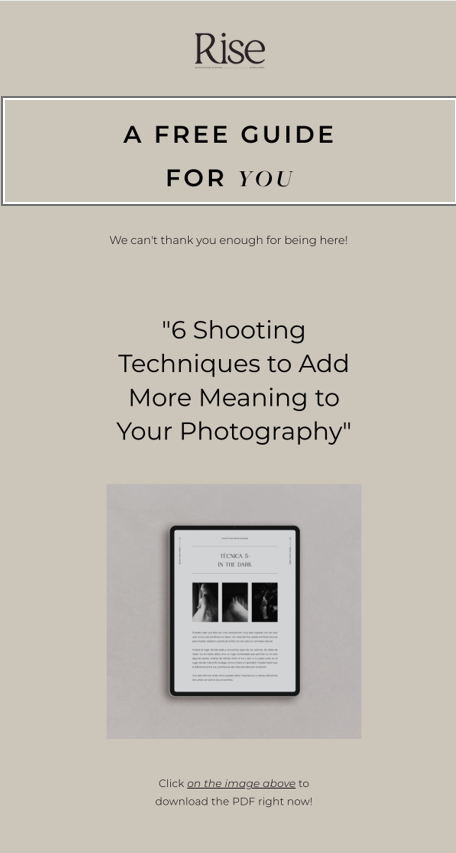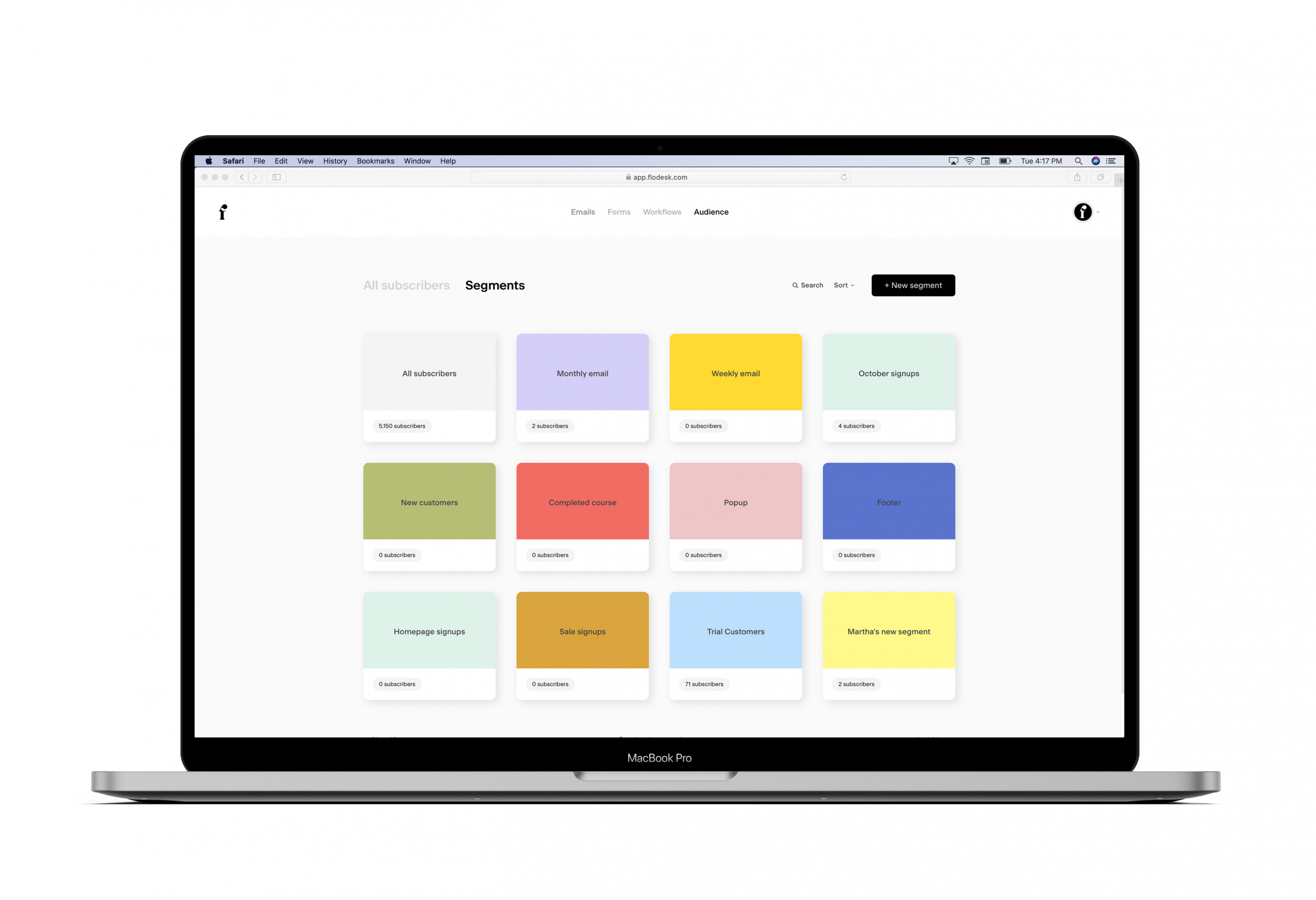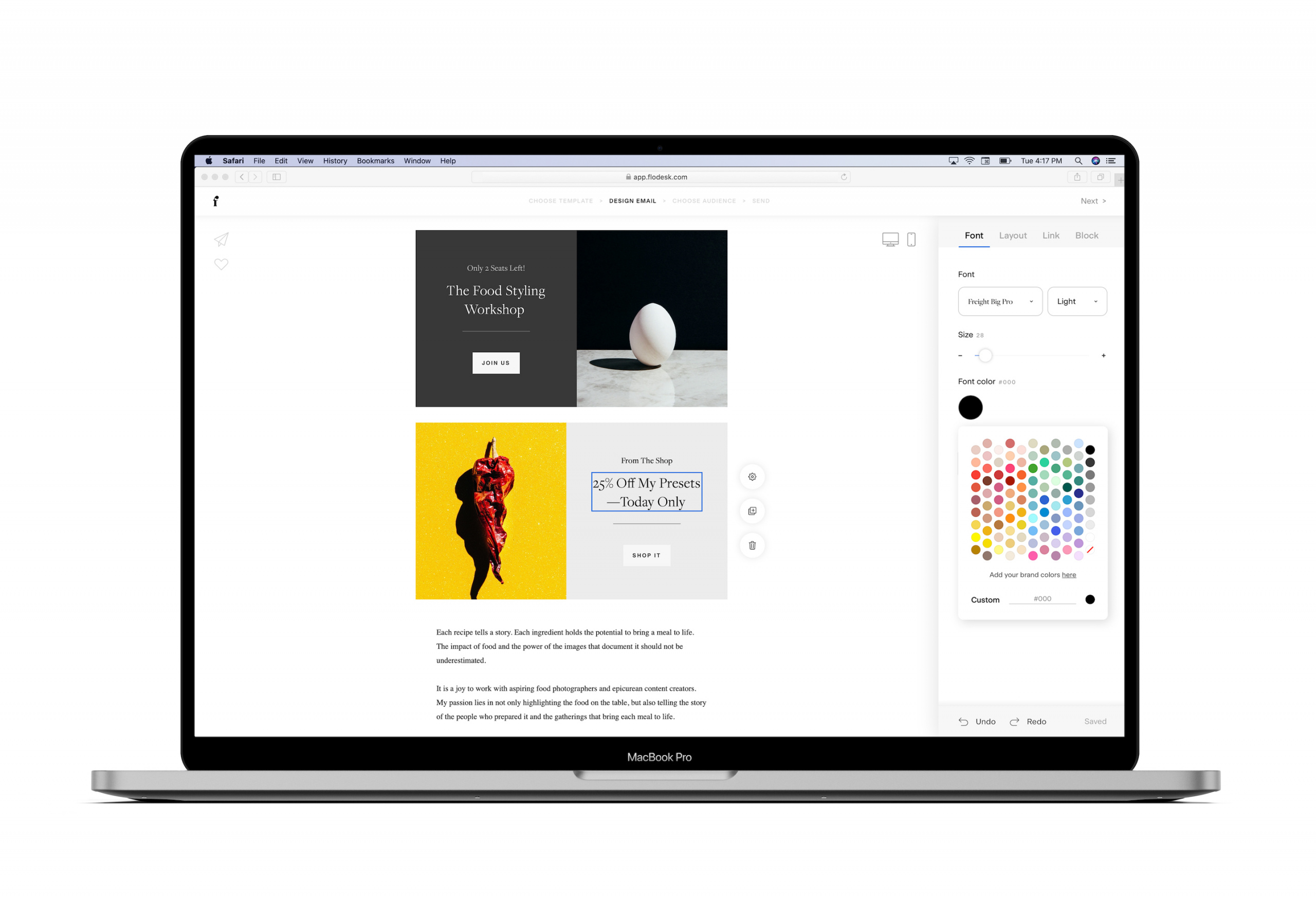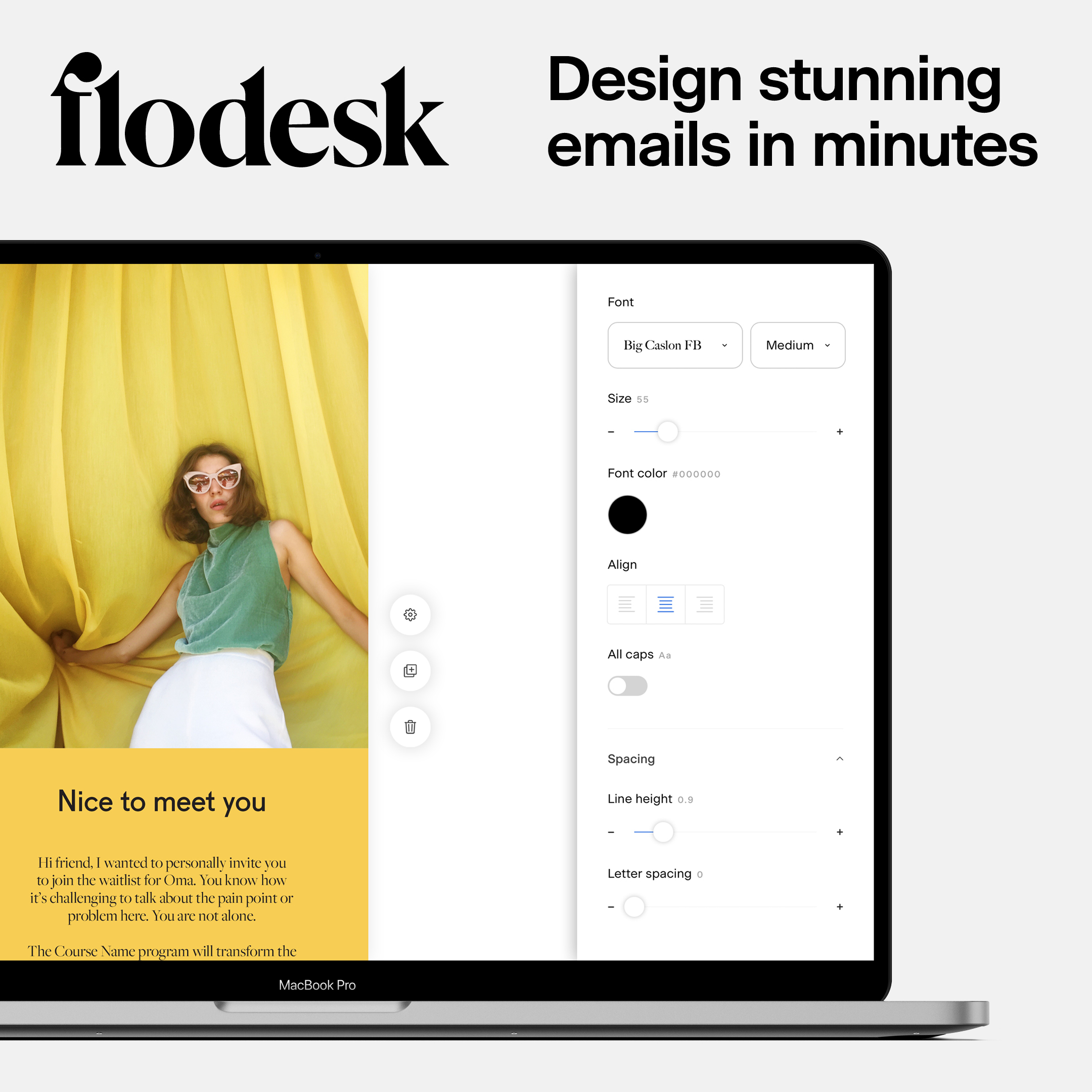Email Marketing for Photographers: How to Boost Your Visibility in Today’s Competitive Market
Table of Contents Jump to:
Jump to:
Table of contents
As a photography business owner, you might be wondering why you need to wrap your head around email marketing. But, since 61% of people say it’s their preferred way for businesses to contact them, it’s pretty crucial to your success.
In this article, we’ll explore three main benefits of email marketing for small businesses, five simple steps to get started and six top tips for effective targeted email marketing for photographers.
Benefits of email marketing for photographers
So why is email marketing so effective for photographers? Let’s start with a quick look at three key benefits.
1. It’s cost-effective
Creating and sending emails costs pennies, even with a large number of subscribers. This makes email marketing an effective use of your marketing budget, no matter how small it might be. And the return on that investment is significant. Data shows that the ROI for email marketing is $40 for every $1 spent, which far outweighs any other marketing channel.
Design beautiful emails at an affordable price
Create stunning emails with our easy-to-use email builder, all for one flat fee.
2. It builds loyalty
You can use email marketing to both attract new photography clients and to keep your current clients engaged, so you’re top-of-mind when they next need a photographer.
It allows you to keep your subscribers updated with your news, promote additional services and create targeted offers to segments of your audience to increase the likelihood of them using your service.
3. It strengthens your credibility
Email marketing offers photographers two key ways to boost their professional credibility and stand out from the competition. First, by providing valuable content to your subscribers and including freebies, such as how-to guides, you’re showing them they can trust in your expertise. Not sure where to start with freebies? We’ve got plenty of lead magnet ideas for photographers.
Secondly, you can use email marketing with your current clients to request a testimonial after a shoot. You can then add their positive reviews to your website or ask them to rate your service on a platform like Google Reviews. This feedback proves to potential clients that other people had a positive experience working with you. This is important because 87% of consumers read online reviews while researching local businesses.
5 steps to creating an email marketing strategy for photographers
So you’re sold on the benefits of email marketing for your photography business. But how exactly do you get started? Follow our simple five-step guide below, and you’ll be sending your first email campaign in no time.
1. Choose an email marketing tool
Email marketing removes the hassle of designing and delivering your emails, meaning you can spend more time doing what you love. Getting started is pretty straightforward, but there are several things to consider that a professional service can help you stay on top of.
Key features in a great email marketing platform
So, if you’re going to use an email marketing platform, what are the essential features to look out for?
- Design options: Since aesthetics are important for professional photographers like you, you need a platform that puts high-quality design front and center. If email marketing is new to you, look for a provider that offers a range of templates to get you started. And if you’re ready to level up, look for a provider that lets you build fully-customizable emails from scratch. You can also take your emails to the next level by using email marketing graphics.
- Automation: If you want to minimize the administration associated with running an email marketing campaign, choose a provider that can automate your most common workflows. Setting up automation to complete tasks like sending a welcome email to new subscribers reduces your workload and the length of your to-do list.
- Mobile friendly: It’s essential to choose an email marketing service that creates responsive emails that look good on different devices. 75% of Americans who check their email do so on their smartphones while they’re out and about. So, it’s essential to choose a provider that produces mobile-friendly emails that offer a good user experience.
- Easy import: If you already have a client contact list stored somewhere in another format and you don’t want to waste time transferring a load of data to a new platform, look for a provider that lets you easily import your contact list.
2. Start building your email list
So you’ve chosen your provider, and you’re ready to start sending your emails. Your first step is to collect email addresses and build an audience for your email content. But what options do you have to start growing your list?
Your website
This is an easy option for growing your list because you can easily add a popup newsletter opt-in form to your website to capture email information from website visitors. Your website is also likely to generate a more targeted and engaged audience than other methods since visitors already have an interest in what you have to offer, otherwise, they wouldn’t be there. Brand photographer Calvina Nguyen adds this sign-up option to her website with an attractive freebie as an added incentive to join her list.
For more tips on where to place your opt-in pages or forms on your website, read 5 High-Converting Places on Your Website to Add Your Opt-in Email Form.
Other people’s websites
If you don’t have your own website yet, don’t worry. Good email marketing platforms like Flodesk allow you to create an opt-in form without a website. In that case, a great second option is to use your professional knowledge and experience to create guest posts on other people’s websites. This is especially effective if you choose small businesses that offer something complementary to your photography services, for example, guest posting on wedding vendors’ sites if you’re a wedding photographer. Add a link to your sign-up form in your author byline or at the end of the article.
Your social media platforms are a great way to drive engagement for your brand. So posting high-value educational content or inspirational images from client shoots can build interest in your business and help you stand out from the competition. You can then leverage your social media following to build your subscriber list. Simply add a link to your sign-up page on your Instagram bio or similar places on other platforms. All the social media platforms also have paid options, such as Facebook Ads, which can help increase traffic to the opt-in page of your website.
Events
Sometimes, nothing beats a bit of face-to-face engagement. For small business service providers, this can be an effective way to build relationships with people in a more personalized way. Consider attending business or social events in your local community to build your brand recognition and encourage email sign-up. For example, you could run a stall with a prize draw to win a luxury photoshoot that people can enter in exchange for their email addresses.
To learn more about building your email list, read How to Build an Email List Without a Website.
3. Find topics important to potential photography clients
Any email you send must deliver valuable content for your subscribers. This means it’s vital to get to know them and work out what types of topics might appeal most. Open rates, which reflect the percentage of people who open your emails, increase by 29% when content is personalized for subscriber needs.
To better understand the type of photography-related topics your subscribers might care about:
- Identify relevant trends to your industry on social media or the web.
- Look for issues people are complaining about that your service helps solve.
- Check out what your competitors are doing—subscribe to their email mailing lists or read their blog.
- Ask existing subscribers—a quick email with topics they can choose from or a free text box means you’ll immediately dial into what your audience wants and needs.
4. Design & send your first email
As you’re growing your list, it’s essential you master a particularly important type of email—the welcome email. The welcome email is the first interaction subscribers have with your brand, and you want it to be a positive one.
74% of subscribers expect to receive a welcome email immediately after subscribing to an email list. That’s why welcome emails have four times the open rate and generate 320% more revenue than other emails, so they’re pretty critical.
Make sure to thank new subscribers for joining your list and, if they joined your list because you promised them a freebie, make sure you include it. Here’s how photography Allison Patel welcomes new subscribers:
Pro tip: If you really want to maximize the chance of new subscribers booking their first photo session with you, it might be worth offering a discount, promotion or other special deals within your welcome email. Welcome emails containing special offers can boost revenue by 30% per email compared to those that don’t.
As mentioned earlier, your welcome email should be at the beginning of a series of emails you send to subscribers after they subscribe. This is definitely a task you’ll want to automate. As a small business owner getting started with email marketing, with 101 other things to do, you certainly don’t want number 102 to be monitoring email sign-ups and manually sending emails every time someone new subscribes.
Your email marketing platform should help you build a workflow that sends a series of automated emails to new subscribers. Educational content or how-to guides are great options to include in your welcome series. These provide your customers with a lot of value and they build your credibility as a professional service whose expertise can be trusted.
Once your initial email sequence for new subscribers has finished, you can also use automation to build workflows that send targeted automated emails based on specific behavior. For example, if subscribers don’t respond to your email newsletters for a certain amount of time, your platform might send out a re-engagement email. On the other hand, you may want to send out a new product launch email with discounts for subscribers.
To learn more about how to use workflows, read What Are Workflows and When to Use Them in Your Email Marketing.
Automate your email marketing
Build powerful workflows that help you automate your email sends with Flodesk
Effective email marketing tips for your photography business
Now you’re clued up on exactly what email marketing is and itching to get started. Here are six tips to maximize the value of your email marketing efforts.
1. Offer value in exchange for emails
People are more willing to share their personal information if they feel like they get something in return. So you need to carefully consider what value you can offer would-be subscribers in return for their email addresses.
A classic way to do this is by offering a freebie as part of your sign-up process. This could be a free ebook, technical guide or free presets that would be valuable to your target audience.
That’s what photographer and educator Camila Urrea offers when new subscribers join her list. Her free guide, ‘6 Shooting Techniques to Add More Meaning to Your Photography’, provides immediate value and is delivered as soon as subscribers sign up.
2. Segment your email
Depending on your photography niche, you may have more than one type of email subscriber, so you have to segment them. Segmenting your list means dividing up your subscribers into groups based on certain demographic characteristics or behavior they have. By segmenting your list, you can send more targeted emails with information personalized to each group.
Splitting your list into segments has two main benefits:
- Higher subscriber satisfaction: With segments, subscribers only receive relevant and valuable information, which leads to higher levels of satisfaction.
- Improves your email performance: When you send emails that provide value (education, entertainment, etc) for your subscribers, they’re more likely to open and engage with your emails. This boosts your open and click-through rates.
Open rates are important as email service providers monitor them and, if they are too low, they start funneling those emails to the junk folder. Click-through rates — which measure the percent of people who click on a link within an email — are great for monitoring subscriber engagement levels. For more tips on improving your open rates, read How to Get People to Open Your Emails.
Author’s note: Segmenting your list is super simple with Flodesk. You can segment subscribers manually, automatically or by filtering them into groups based on specific criteria. Learn more about segmenting, plus how to personalize your email marketing with Flodesk forms.
3. Make your subject lines attractive
Possibly the most crucial strategy for improving your open rates is having an enticing subject line. Over 50% of Americans say they get too many marketing emails, so you need yours to stand out in a crowded inbox.
There are three main tips to making subject lines attractive:
- Keep it clear: Your subject line needs to clearly indicate what the content of the email is and, when the recipient clicks on the email, the email must match the subject line, or you’ll instantly lose trust.
- Keep it concise: Most subscribers will only see a certain number of characters of your email subject line, so you need to keep it brief. Put your ‘power words’ at the beginning. Anything that will excite the reader or hook them into your email content needs to go right at the start, so it’s not lost.
- Make it personalized: You need to inject your personality and brand voice into your subject line. Make sure it’s consistent with how you typically communicate with subscribers and match what you know about how they like to communicate with you. You can even include your subscriber’s name.
4. Avoid getting into the spam folder
Service providers like photographers have an average inbox placement rate of 89%. This means over 10% of your emails don’t make it to your subscribers. So what can you do to bring this percentage down?
First, being hyper-focused on providing content that’s valuable and relevant to your subscribers makes it less likely to end up in the spam folder. As we noted above, emails that improve open and click-through rates also signal to inbox providers that subscribers want to receive them and hence avoid the dreaded spam folder.
Here are two further tips to reduce the number of your emails that head to junk:
- Gain permission: Whatever method you use to build your email list, it’s essential that it’s clear to subscribers that they are opting-in to your email list. If they don’t want to receive your emails and mark them as spam, future campaigns will also end up in the junk folder. Which signals to email service providers that you’re spamming people.
- Clean up your email list. If you have a lot of inactive subscribers, they may well be affecting your inbox placement rate by failing to engage with your emails. Every few months, make sure you clean up your email list and remove subscribers who have been inactive for a specific time frame—say 90 days—to make sure you’re focusing your marketing effort on subscribers who are loving your content.
5. Make your branding consistent
Branding is vital to help (potential) customers recognize your product or service and differentiate it from competitors. So it’s important to keep it consistent across every subscriber interaction, whether that’s your website, email newsletters or social media. For photographers, this is even more crucial as the strength of your brand design shows your level of professional creativity capability and approach.
At Flodesk, we appreciate the importance of brand design for photographers, which is why all our email templates are fully customizable to match your brand’s look and feel. And our proprietary Layout blocks and drag-and-drop functionality help you quickly and easily build emails that have the look and feel you’re after.
6. Track results and improve on them
Running a small business can be all-consuming, so you want to make sure you’re getting the best return for your efforts. You can only do that if you track the key metrics associated with email marketing and take steps to improve them. Open rates and click-through rates are two of the most important metrics to monitor your email campaign performance, and you’ll also want to look at your conversion and unsubscribe rates.
Conversion rates represent the percentage of people who complete a desired action after reading your email—such as booking a photo shoot. Unsubscribe rates show the percentage of people who choose to unsubscribe from your campaigns. Taken as a set, these metrics should help you identify if you’re meeting your goals for your email marketing strategy and, if not, take action to improve your outcomes.
If your email marketing platform provider has built-in analytics to help you understand how successful your campaigns are, make sure you regularly review the data to help inform your decision-making.
To learn more about how to use Flodesk Analytics to track your performance, read Understanding Your Flodesk Email & Workflow Analytics.
Use email marketing to boost your photography business
Email marketing is essential for attracting subscribers and building and sustaining a relationship with potential clients for your photography business. Using good email marketing software makes getting started easy for photographers, with visually appealing, easy-to-design emails, automated workflows based on schedule or customer behavior and built-in analytics to inform your decision-making.
As the fastest-growing email marketing company, Flodesk can do all this and more. Our high-end designs and stunning templates appeal to professional creatives, and our intuitive platform helps small photographers like you grow their email list and create emails people love to get.
Why not get started with Flodesk today?

